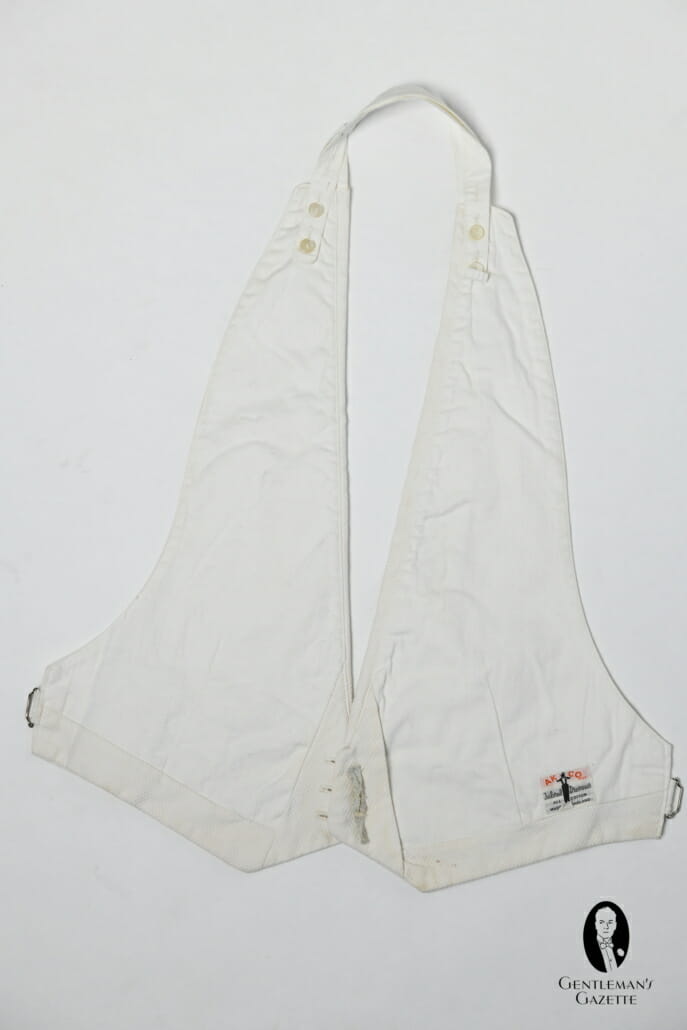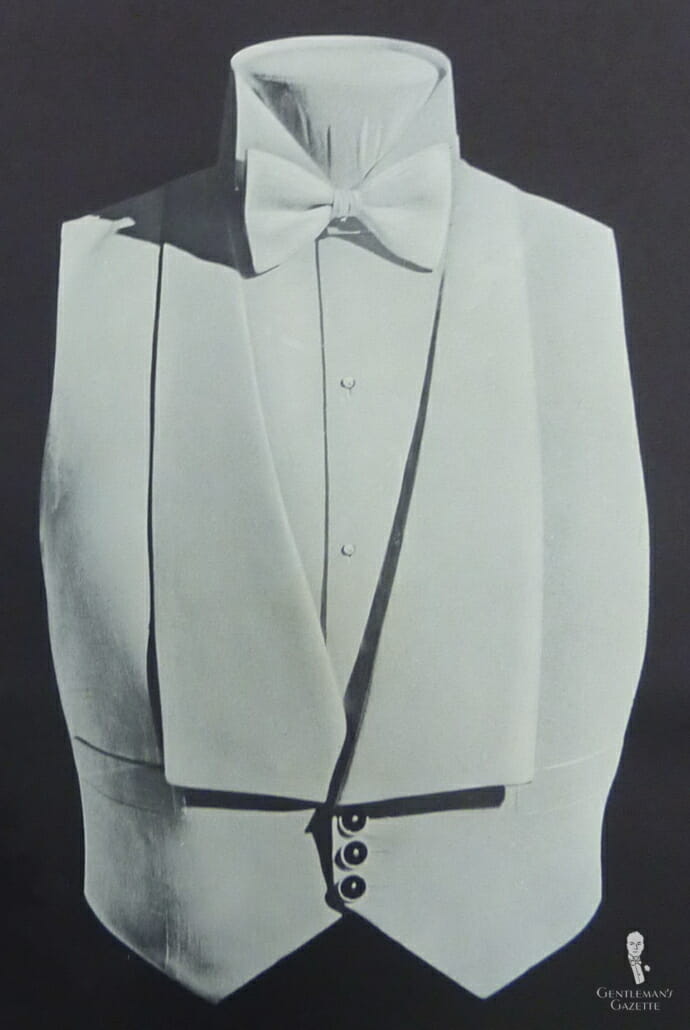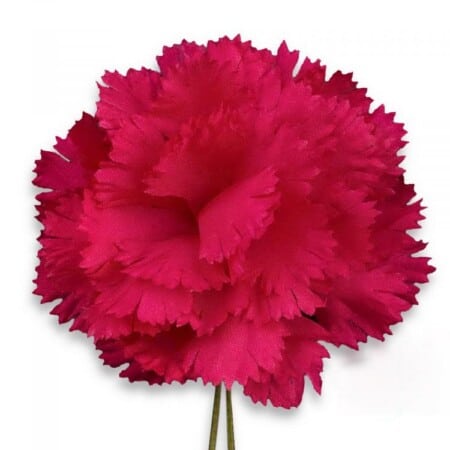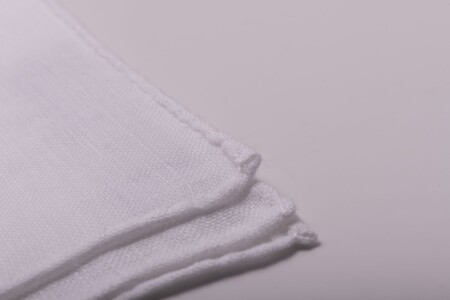Proper White Tie Waistcoat Cut
The full-dress waistcoat is constructed of white piqué (marcella in the UK). It can be single- or double-breasted but always features a deep V or U-shaped opening and is made in the backless style popularized by the future Duke of Windsor in the 1920s.

The most critical consideration is its length. Novices invariably treat the white-tie waistcoat as a typical suit vest, believing that as long as it covers the trouser waistband then its length beyond that point is irrelevant. This approach is fine for vests covered up by standard hip-length suit jackets. However, with a coat that is cut high up at waist level, a long waistcoat’s bottom will be left completely exposed beneath the coat fronts.

The discordant juxtaposition is made all the more glaring by the stark contrast of the black coat and white vest. Onlookers are thus left to infer that a man’s dry cleaner must have accidentally shrunk the coat down to a child’s size. Therefore it is critical that the full-dress waistcoat be either altered or custom-tailored to suit your actual tailcoat; it must be long enough to cover the trouser waistband yet not so long as to extend below the coat fronts.

Within these parameters there is room for extensive variation in shape of the waistcoat’s revers (lapels) and its bottom edge, making it the sole garment than may be used to add a personal touch to the otherwise rigid white-tie uniform (see sidebar).

White Cambric, a Marcella Pique Alternative for Waistcoats

For a short while during the 1930s, a smooth cotton cloth with high shine called white cambric was also used for white tie waistcoats, white tie shirts, and white bow ties, however, that trend did never catch on.
Fine Waistcoat Finishes
Better quality models will have a neckstrap that adjusts with buttons rather than a metal ring. Neither type of fastener is ever visible, though, as a proper full-dress shirt will have a loop built into its upper back designed to hold the neckstrap – and the bow tie band – from riding up above the tailcoat’s collar.

Finer waistcoats will also feature a small loop near their bottom edges that fastens to the inside of the trouser and ensures that the weskit will not ride up and expose the waistband.

The single-breasted model closes with three buttons while the double-breasted version usually takes four. The buttons are usually self-faced (US) or mother-of-pearl (UK) and on better models they can be replaced with formal waistcoat studs if desired.
White Tie Waistcoat Styles
See the Vintage Waistcoat section for some of the numerous styles of waistcoats available in formal wear’s heyday.

Formal Facts
Well Suited: Shirt Loop
If your white tie shirt has a loop for the waistcoat neckband you will need to fasten the band after putting it through the loop. Since this is next to impossible to do once the shirt is on your back you will need to execute this step before putting it on.

The Black Waistcoat with White Tie
Black waistcoats with white tie are either worn by the waiter or they used to be worn at formal funerals. In this day an age the waistcoat should always be white.

Explore this chapter: 10 White Tie Guide



